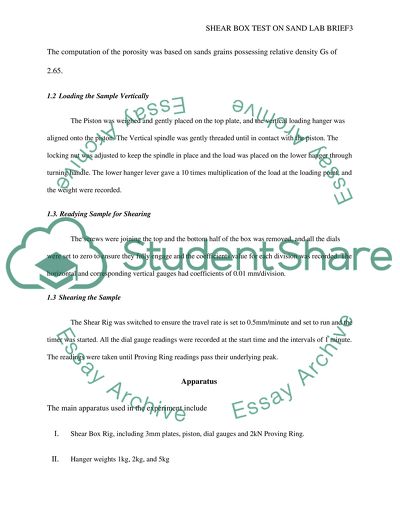Cite this document
(“Shear Strength Tests Lab Report Example | Topics and Well Written Essays - 500 words”, n.d.)
Shear Strength Tests Lab Report Example | Topics and Well Written Essays - 500 words. Retrieved from https://studentshare.org/engineering-and-construction/1693744-shear-box-on-sand-lab-brief
Shear Strength Tests Lab Report Example | Topics and Well Written Essays - 500 words. Retrieved from https://studentshare.org/engineering-and-construction/1693744-shear-box-on-sand-lab-brief
(Shear Strength Tests Lab Report Example | Topics and Well Written Essays - 500 Words)
Shear Strength Tests Lab Report Example | Topics and Well Written Essays - 500 Words. https://studentshare.org/engineering-and-construction/1693744-shear-box-on-sand-lab-brief.
Shear Strength Tests Lab Report Example | Topics and Well Written Essays - 500 Words. https://studentshare.org/engineering-and-construction/1693744-shear-box-on-sand-lab-brief.
“Shear Strength Tests Lab Report Example | Topics and Well Written Essays - 500 Words”, n.d. https://studentshare.org/engineering-and-construction/1693744-shear-box-on-sand-lab-brief.


